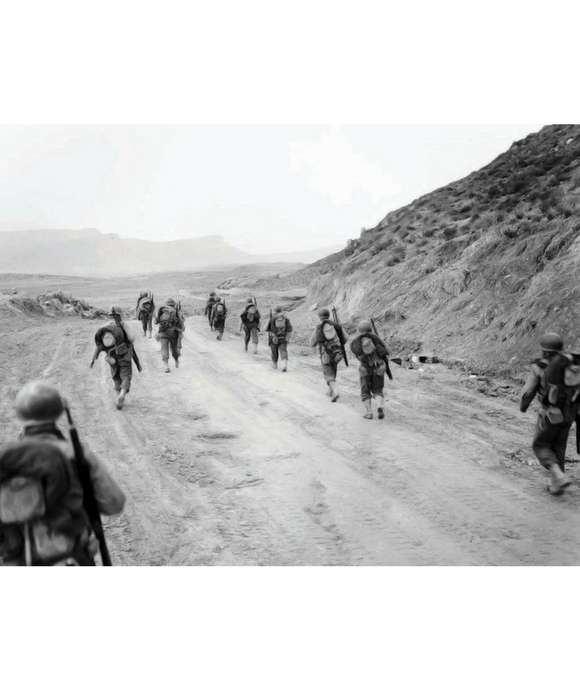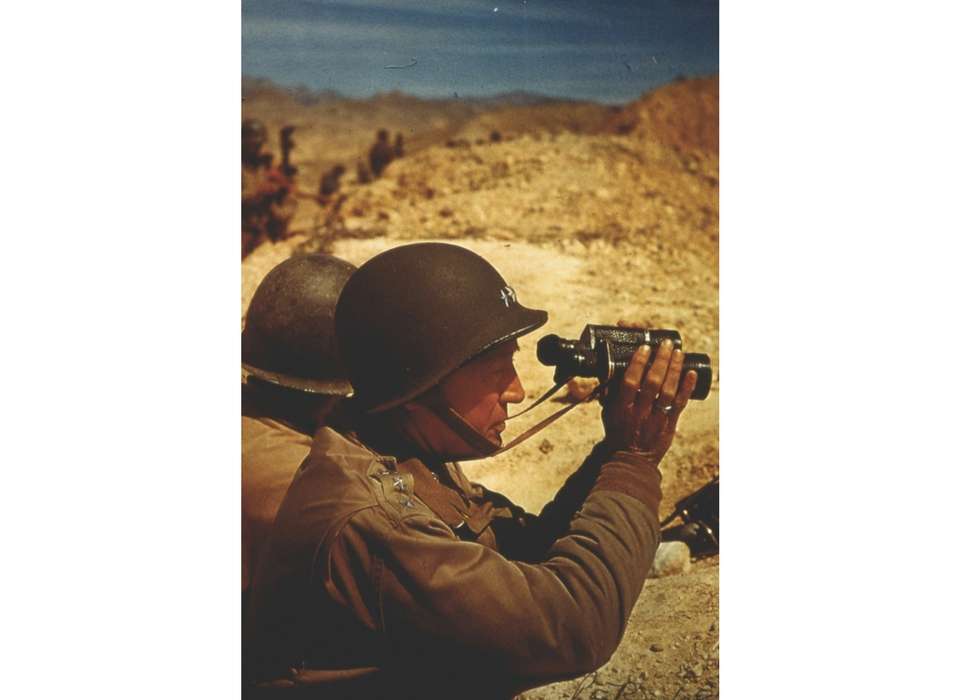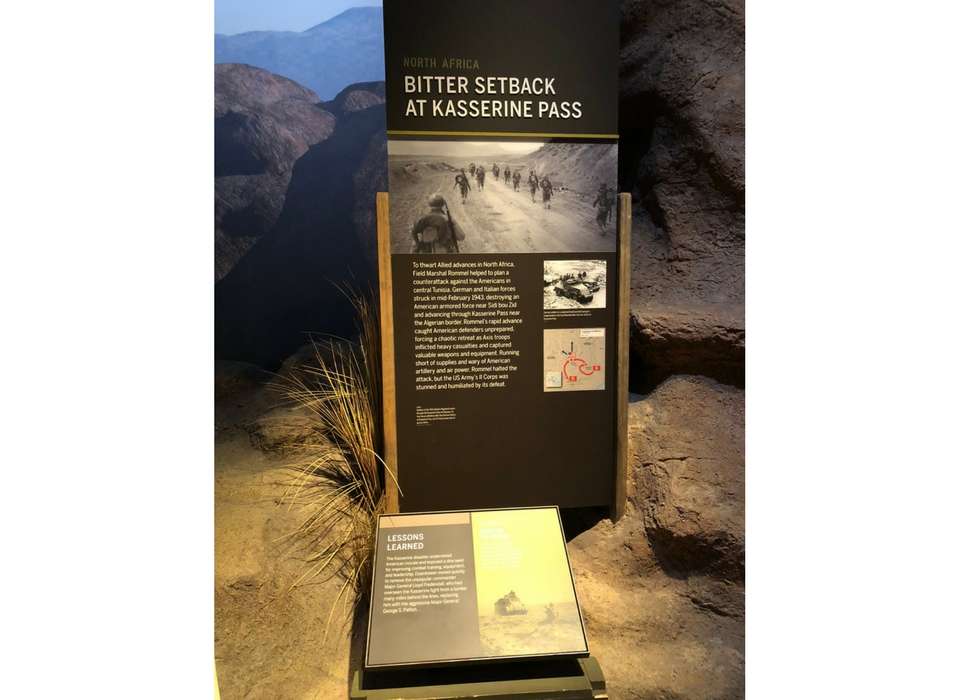In November 1942, the American and British forces launched Operation Torch, the invasion of North Africa through French Morocco and Algeria. This was the first campaign in which the American Army engaged the armed forces of Nazi Germany, commanded under General Erwin Rommel. The Allied forces moved steadily eastward, with the British taking Tripoli under General Bernard Montgomery in late January 1943. Allied forces crossed the Atlas mountains and took up forward positions at Faid, from which they could thrust eastward toward the Mediterranean sea, dividing Rommel’s forces in the north and south. But the American Army was about to encounter the tough realities of what war with the German army truly meant.
Acting upon the threat, in mid-February Rommel used the Afrika Korps 10th and 21st Panzer divisions to push back the Allied defensive lines from the Eastern to the Western Dorsale within the interior plain of the Atlas mountains. The US II Corps concentrated its strength at Tebessa, where Allied commanders Lloyd Fredendall and Kenneth Anderson (UK) believed they could best protect the Kasserine Pass. Rommel, however, sensed the opportunity. With the momentum against the Allied forces, he realized an attack directly on their main strength through the Kasserine Pass might yield impressive gains— the capture of much-needed supplies, protection of the German-held coastal region to the east, and a possible forward staging area for the Luftwaffe to stage further attacks.

Kasserine Pass Symposium
On the 75th anniversary of the battle of Kasserine Pass, The National WWII Museum hosted a symposium, looking at the key lessons of the battle and ways the setback in Tunisia produced a hardened US Army that would march on to victory.
In the early morning hours of February 19, the Germans launched their attack through the Kasserine Pass. They were able to inflict heavy damage on the Allied forces in the coming days, as the Allies reeled westward in retreat for 50 miles. Underlying problems among the Allied forces, and within the American Army in particular, became painfully clear. The Allied forces were not properly positioned because their commanders had not personally reconnoitered the landscape. Not only were the American, British, and French forces uncoordinated among themselves, but within the American forces Fredendall had split up elements within divisions, assigning them individual tasks on the battlefield rather than emphasizing coordinated, integrated actions. The inexperience of the US Army in combat was evident in the performance of both troops and equipment. These elements later drew Rommel’s personal scorn. Finally, it was evident that the Allied leaders did not inspire confidence among their men.
Despite these losses and setbacks, the US II Corps along with British reserves managed to regroup and hold on February 22, launching a massive artillery attack that halted the German offensive. Faced with his own overextended supply lines and an Allied force that was now receiving rushed reinforcements, Rommel chose to exit and ordered all Axis units to return to their starting positions to concentrate on defending the German-held coastal areas.
While Kasserine Pass was not an American victory, it did hold deep significance for the future. The Americans seriously contemplated where their efforts had failed and boldly initiated changes to improve their battlefield performance. Emphasis on air superiority, proper cover in the desert landscape, and positioning of units so that they could effectively work together and cover each other in a unified manner was stressed. Finally, General Dwight D. Eisenhower took control of the command structure. He created the 18th Army Group under General Harold Alexander (UK) as the new Allied headquarters in North Africa, and placed an invigorating leader, Major General George S. Patton (see top photo), in charge of the US II Corps. The American reaction to Kasserine Pass showed the American Army’s determination that next time the Germans would experience very different results.
This article originally appeared in V-Mail, a quarterly newsletter for Museum Members.
Keith Huxen
Keith is the former Senior Director of Research and History in the Institute for the Study of War and Democracy at The National WWII Museum.
Cite this article:
MLA Citation:
APA Citation:
Chicago Style Citation:






![Max Fuchs, New York City cantor, sings as Rabbi Sydney [sic] Lefkowitz, Richmond, VA, conducts the first Jewish services from Germany.](/sites/default/files/styles/max_650x650/public/2025-10/image1.jpg)



